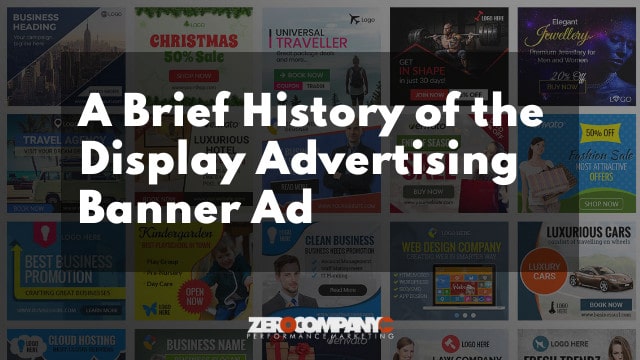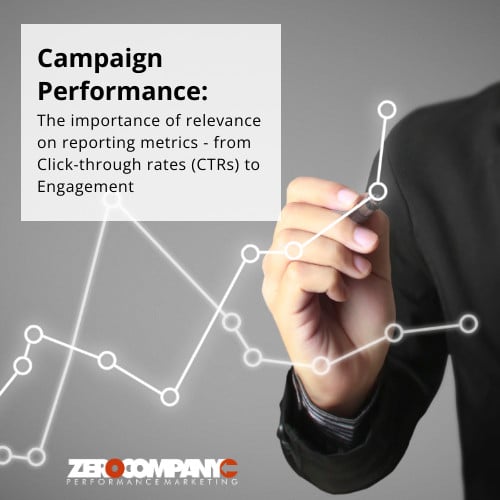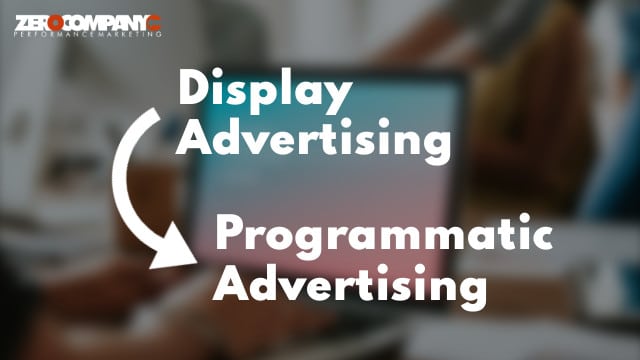Table of Contents
Back in the early days of the internet, when most companies were still building a website, traditional media companies were getting worried. And for good reason. Advertisers were entering a new world of measurable and actionable media; one where their thirst for immediate results would finally be satisfied.
Instead of hoping their ads were being seen, advertisers would soon be able to measure exactly how many people “clicked” on their ads or accessed their website.
This new “electronic media” would get even smarter over the next 25 years, eventually becoming the most targeted and personalized way to reach customers in every stage of the buying process.
Enter the world of digital display advertising.

When advertisers first learned about display advertising, many of them did not have the most sophisticated websites, but those who did were able to take advantage of unprecedented exposure on the homepages of the world’s top media companies.
Sadly, these online banner ads were not always so welcome by early internet surfers. What started out as a great idea soon led to flashy and obnoxious pop-ups that became the bane of any web-surfer’s existence. Many industry veterans believe that this early form of display advertising caused site visitors to ignore any type of banner ads, even paying to download their first pop-up blocker.
One of the best-known early banner ads was the one AT&T placed on the HotWired home page for three months – at the cost of $30,000. Needless to say, the homepage was considered prime real estate for advertisers back in the 90s. Display advertising was always purchased upfront, by position, and for a set period of time, which was much different from the CPM and pay-per-click models that evolved over time.
Results for this homepage campaign did not disappoint. In fact, the ad had an unbelievable click-through rate (CTR) of 44 percent, a result that would make today’s marketers jump for joy! For some perspective, today’s average CTR for display advertising in the financial industry is about 0.52%.
The Early Days of Audience Ad Targeting
 By the time marketers began to hear about the “miracle of digital advertising”, the technology behind the scenes was already getting more sophisticated. As early as 1995, ad agencies began specializing in display advertising and helping their clients determine the right online media mix to target their ad placements. By identifying the websites where their ideal customers visited, these early digital agencies were able to target a specific audience.
By the time marketers began to hear about the “miracle of digital advertising”, the technology behind the scenes was already getting more sophisticated. As early as 1995, ad agencies began specializing in display advertising and helping their clients determine the right online media mix to target their ad placements. By identifying the websites where their ideal customers visited, these early digital agencies were able to target a specific audience.
One of the pioneers in this space was Yahoo!’s SmartAds, which allowed advertisers running campaigns on their Right Media ad exchange to build unique ads “on the fly” and show the right ad to the right person at precisely the right moment.
In a 2007 New York Times article about this product launch, Yahoo’s then-VP of display marketplaces Todd Teresi) said, “You can buy the entire Wall Street Journal site, and when a female shows up, we will create a different ad or when someone from New York shows up, another one.”
As the display advertising marketplace grew to include tablets and smartphones, revolutionary ideas like this one were popping up at a rapid pace. All forms of audience targeting were often used simultaneously, including contextual, behavioral, audience, and location-based targeting.
Geographic targeting might have been an early breakthrough for display advertising, but with location targeting advertisers could now specify who would be able to see their ads. As mobile inevitably overtook desktop traffic, data providers added location data from smartphones to the growing list of targeting capabilities, allowing marketers to geo-fence their campaigns down to the exact place where they were currently shopping.
Digital Agencies and ROAS Tracking
It was not long before the new digital media landscape led to the formation of ad agencies that specialized in everything from display advertising to search-engine optimization (SEO). Digital advertisers who lacked the expertise to manage their own campaigns looked to experts like Zero Company Performance Marketing for a vast array of digital ad services and report metrics, including cost-per-click (CPC), cost-per-acquisition (CPA), site traffic, attribution, and more.
Before programmatic advertising entered the digital lexicon, agencies were using Google Analytics, DoubleClick, and third-party ad tags to gather key audience insights. Rather than casting a wide net and running ads across multiple sites, these early agencies found strategic ways to hone in on specific audience sets based on reporting from test campaigns.
Rather than casting a wide net and running ads across multiple sites, these early agencies found strategic ways to hone in on specific audience sets based on reporting from test campaigns.
Audience retargeting was one of the best ways to ensure that anyone who clicked on an ad or visited a website would be followed around as they navigated to other websites. While this was an effective tactic, online audiences soon grew tired of seeing the same ad multiple times for a pair of shoes they looked at once.
Enter the frequency cap, a simple way for campaign managers to limit the number of times a single IP address would see a retargeted impression after visiting a website. The sweet spot seemed to be 3-5 times over the next 48 hours, but not every advertiser complied. As a result, people began to disable cookies to maintain privacy while browsing.
The Rise of Relevance - From Click-through Rate (CTR) to Users’ Attention Metrics
Click-through rates may have been the “be all, end all” for digital advertisers for the first few decades of display advertising, but that is no longer the case.
Serious debates within the digital media community have challenged the value of metrics, such as the number of clicks to a landing page, versus the depth of audience engagement. As a result, digital publishers have started to look at engagement metrics and advertisers are finding ways to buy ads based on users’ attention rather than the number of impressions.
It may take a while before engagement metrics and other relevance measurements overtake the dominance of volume measurement, but it makes sense to utilize all available audience data to enhance a campaign’s performance.

Programmatic Advertising and Real-Time Bidding
Fast forward to the current day and the summation of every online marketer’s dream has become a reality. Programmatic advertising is able to optimize campaigns around multiple objectives, at scale.
Since the earliest days of digital advertising, ad agencies and advertisers have evolved from buying ad space directly from publishers and started to rely on a series of ad networks and exchanges, or buying platforms, which provide an automated (programmatic) process for bidding on impressions in real-time. More commonly known as “trading desks,” these platforms allow for hyper-targeting and computerized campaign management that is designed to reach a preset goal.
While many advertisers still struggle to thoroughly understand exactly how the process of programmatic advertising works, that is not necessary. It has become the milieu of digital agencies and specialists who obsess over all details and make it their business to ensure a programmatic display advertising campaign exceeds all expectations.
Working with a digital agency that specializes in high-performing display advertising campaigns, such as Zero Company Performance Marketing, allows the advertiser to rely on the expertise of professionals who sweat every detail to ensure the best possible results.







